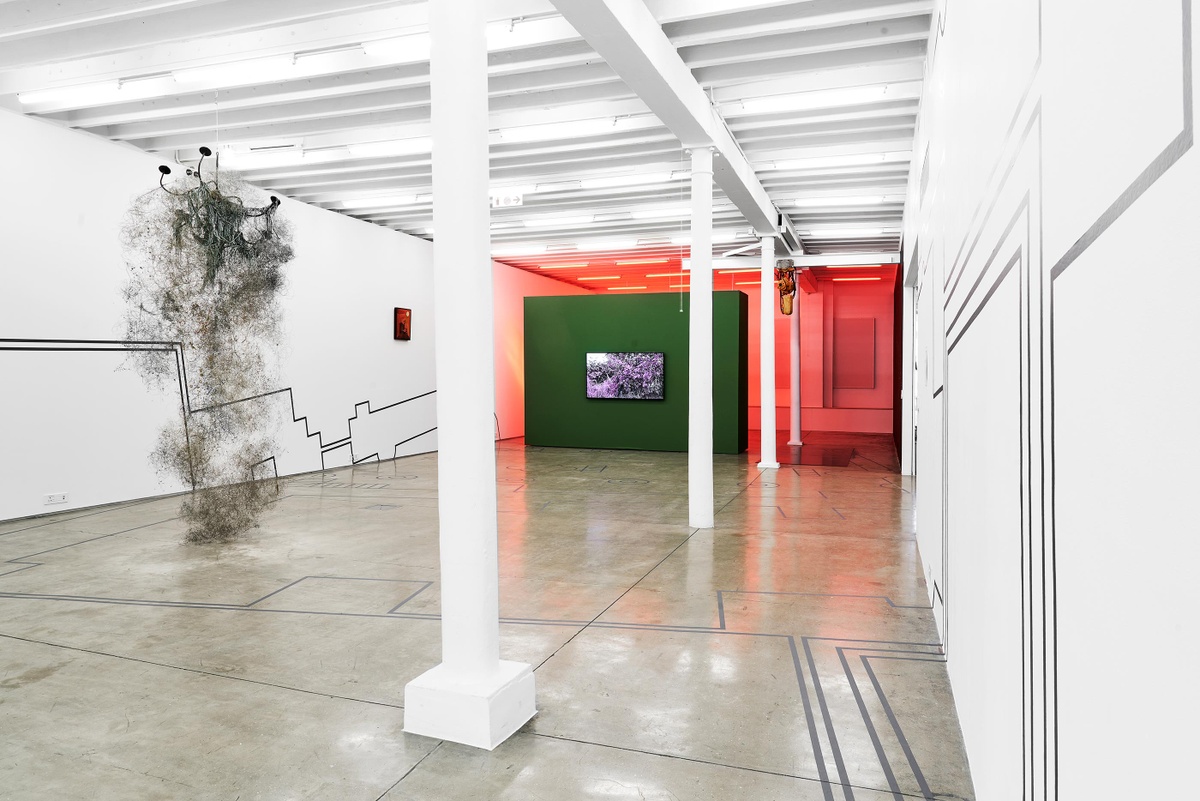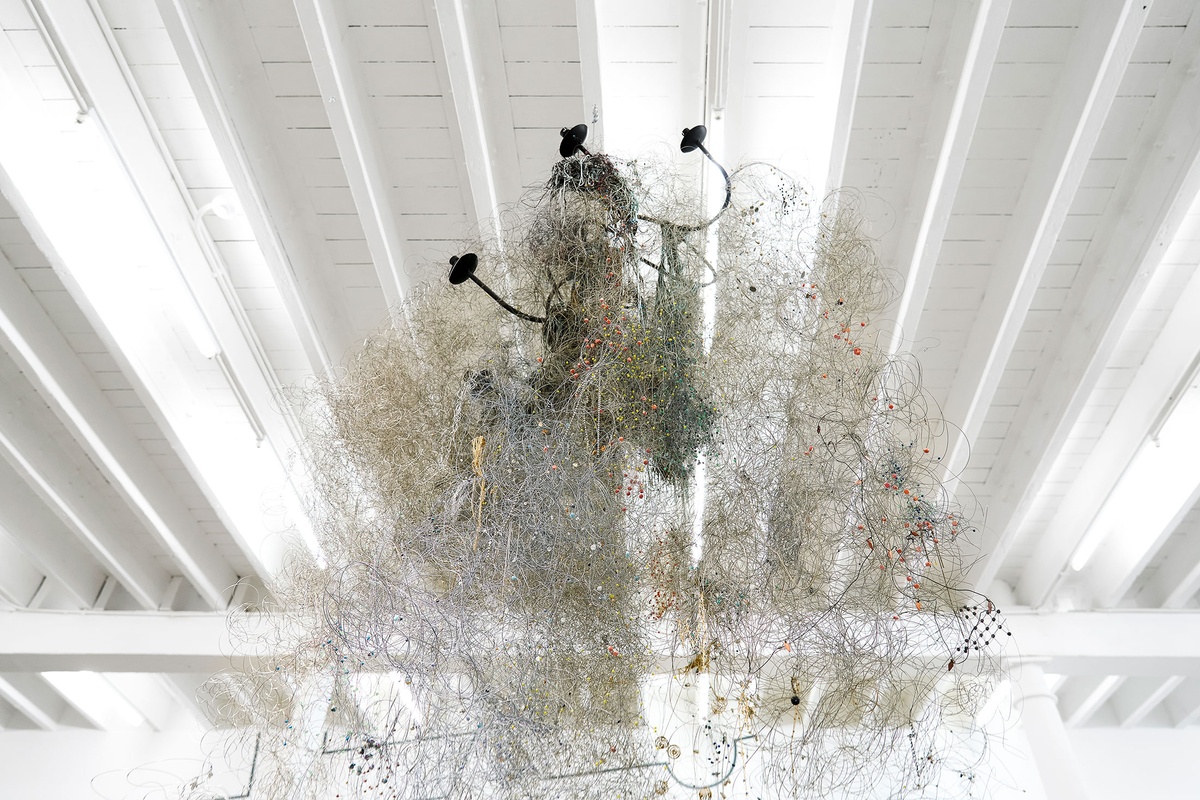Igshaan Adams

When Igshaan Adams took up residency at A4 in August 2020, the first work he hung in the gallery was the sculptural form Oorskot (2016). A predecessor to 65 Bloem Street, Oorskot was placed in almost exactly the same location 65 Bloem Street later appeared in the exhibition Customs at A4. An accumulation of beads, wire, and rope, Adams spoke of the work as a place for play as well as risk. Pieces stored from past tapestries found themselves accumulating form, gathering in what the artist described as dust clouds. Recalling one particular day, standing alongside Adams as he flung a string of jewels toward one such sculpture; it caught, the dark glass beads seeming both dangerous and tenuous. This was memory as material. Adams describes these sculptures in relation to his ancestral home of Namaqualand, where children kick up the red sand and soil when dancing a traditional dance called the riel. “That's the visual I have for how I plan on installing these clouds, how I look at them at this point – as the animation of those dust particles, and the movement through this space. How close can I get with this material to that accuracy?” Within 65 Bloem Street is an ensnared chandelier, crystal beads, charms shaped like silver scimitars. Like archived dreams, these hang suspended and glinting in the gallery’s light offering clues; asking questions.
b.1982, Cape Town
Collected under the loose description of tapestry, Igshaan Adams’ woven works offer a haptic meditation on the changeability of being, which is never static but always reworked, stitched and unstitched. To the artist, the ritual repetition necessary to his medium presents itself as spiritual simile; each bead strung a material dhikr. Much like the ninety-nine names of Allah are chanted in Sufi practice, that they might wake the dormant divine within the speaker, so weaving too is an embodied commitment to slow accumulation and transformation. Bearing witness to life’s traces and traumas as inscribed in overlooked spaces – particularly those of Bonteheuwel, a low-income suburb on the Cape Flats where Adams was raised – the artist transcribes desire lines across fields and worn paths on linoleum floors, honouring the passages of time and people that shaped them. Adams’ work is marked by both a distinct, even sensual, pleasure in the tactile, and a lyrical invocation of the immaterial; the patina of the past distilled in objects of singular beauty and quiet dedication.




